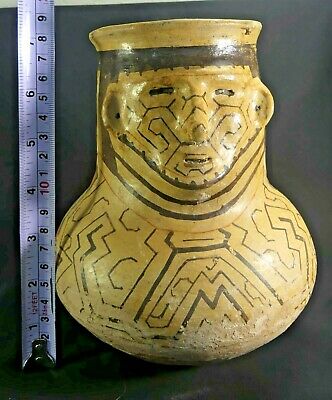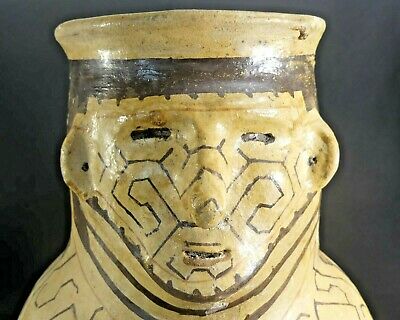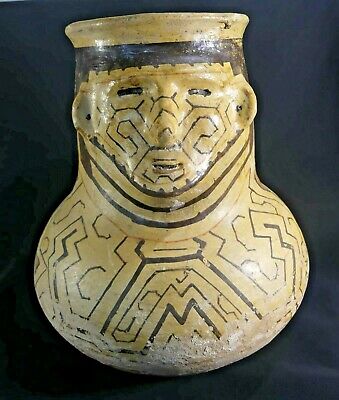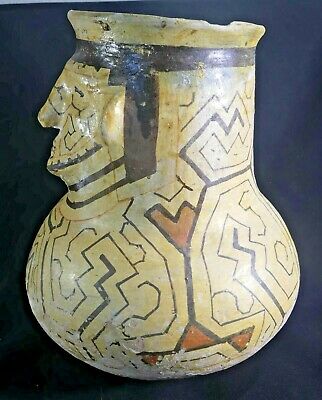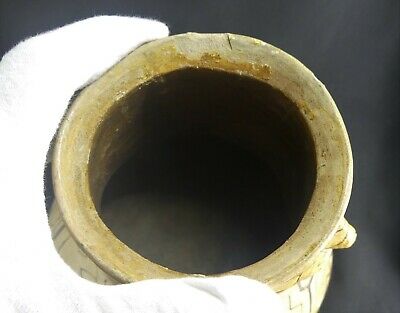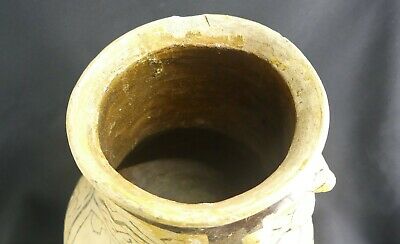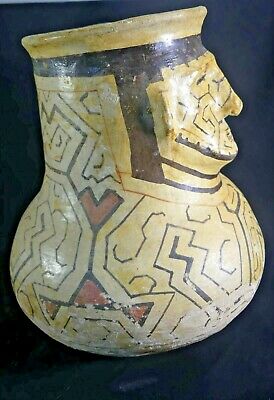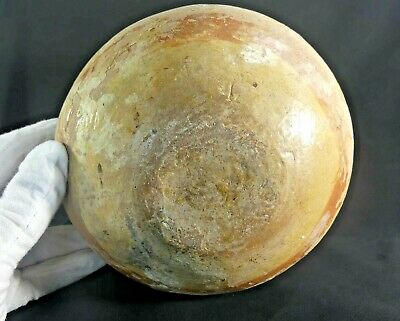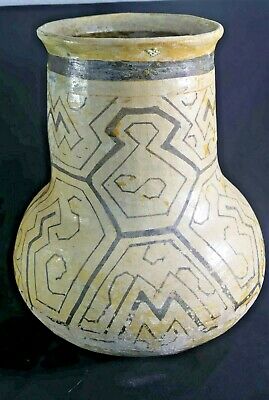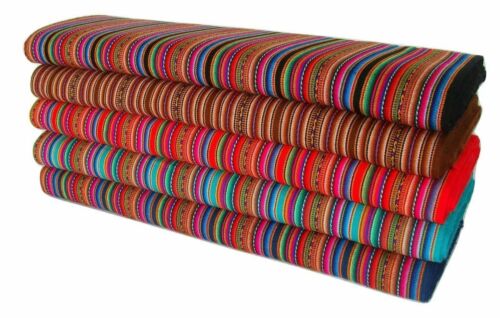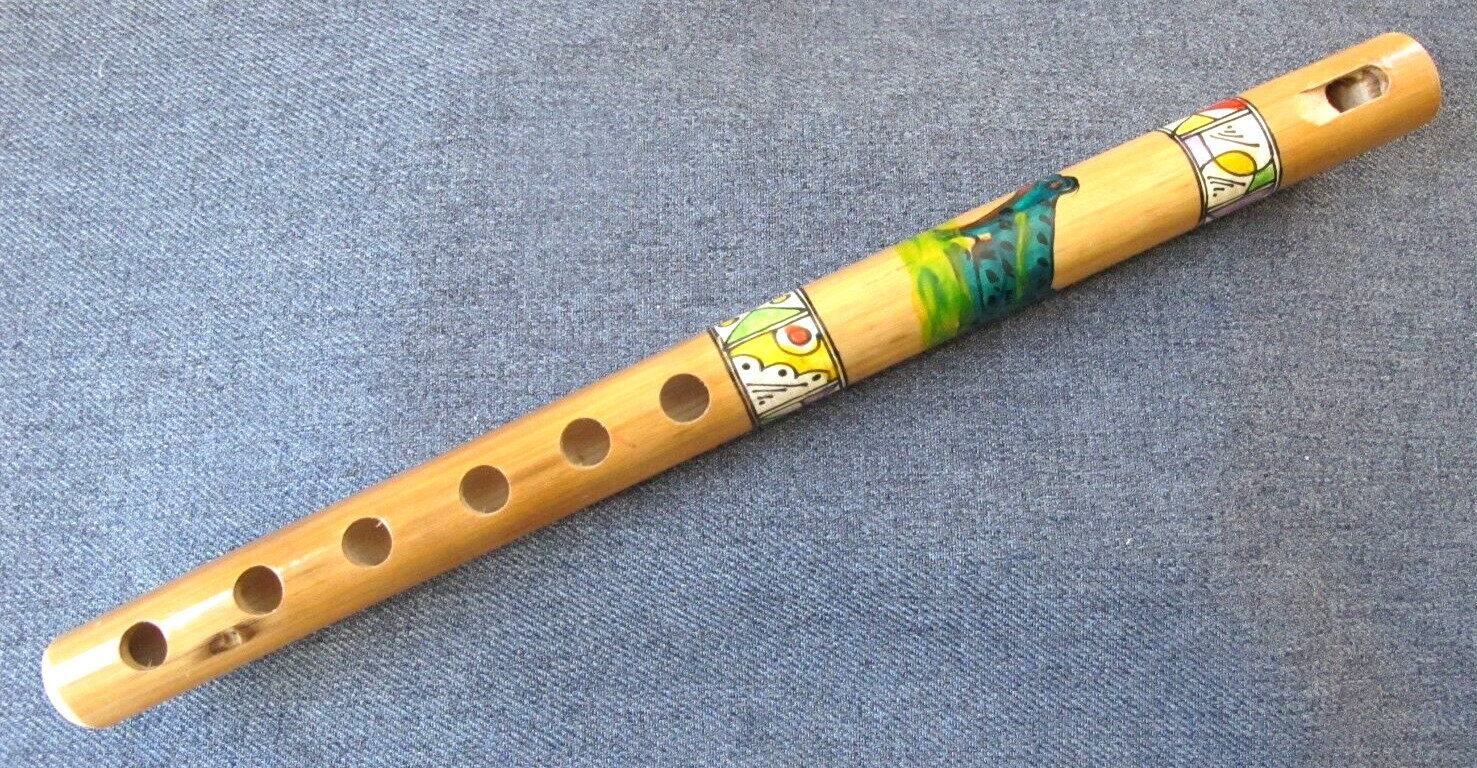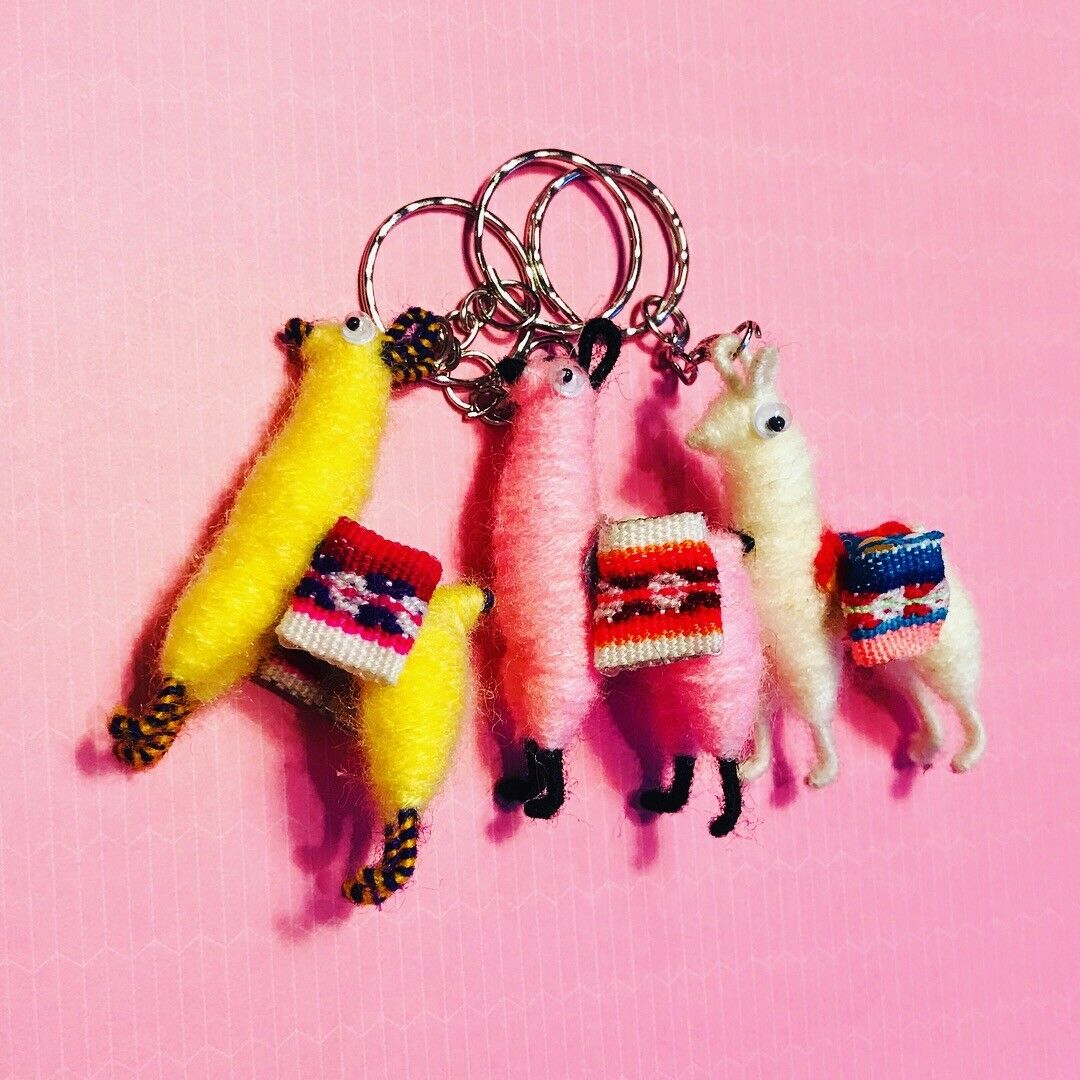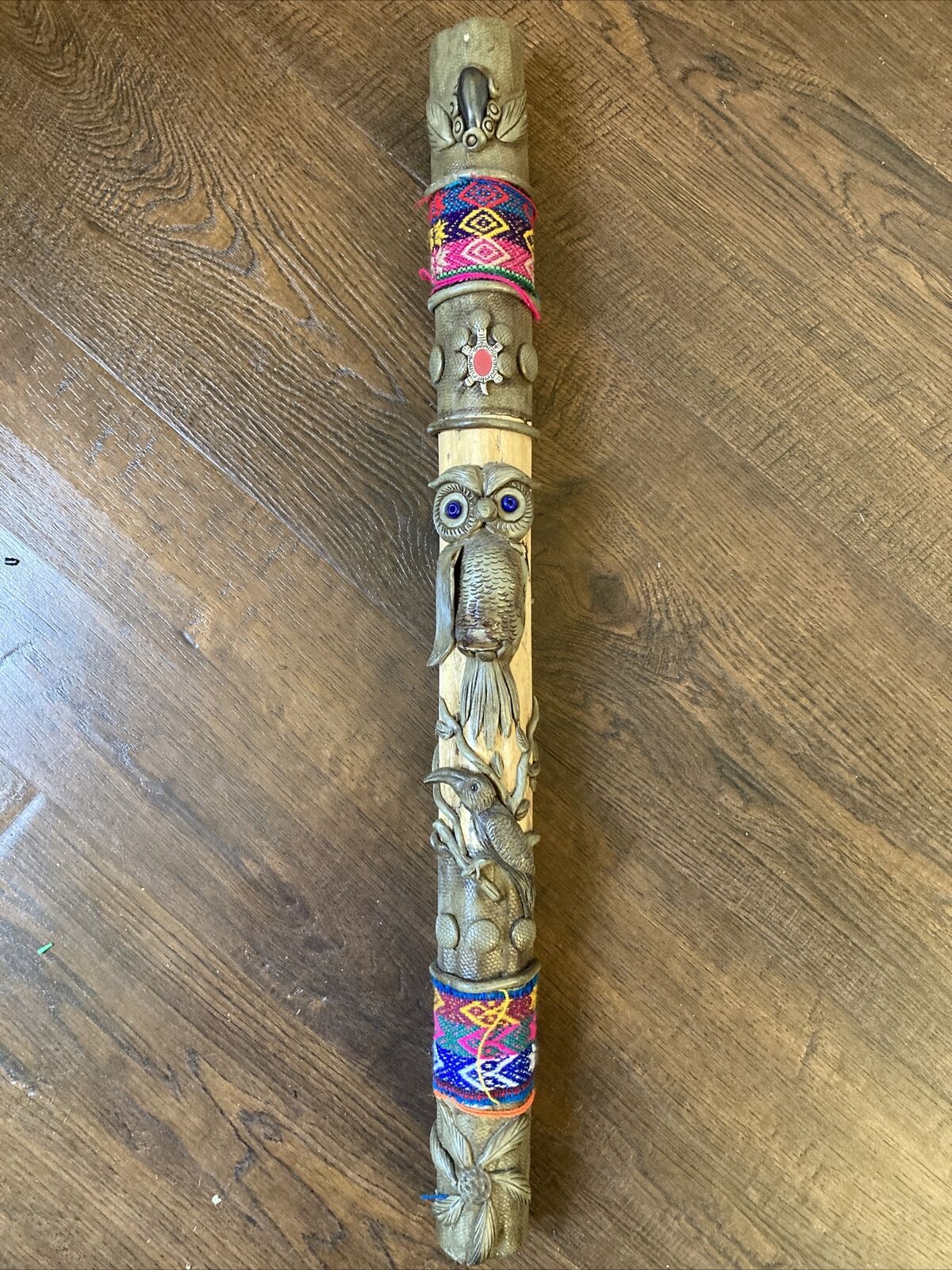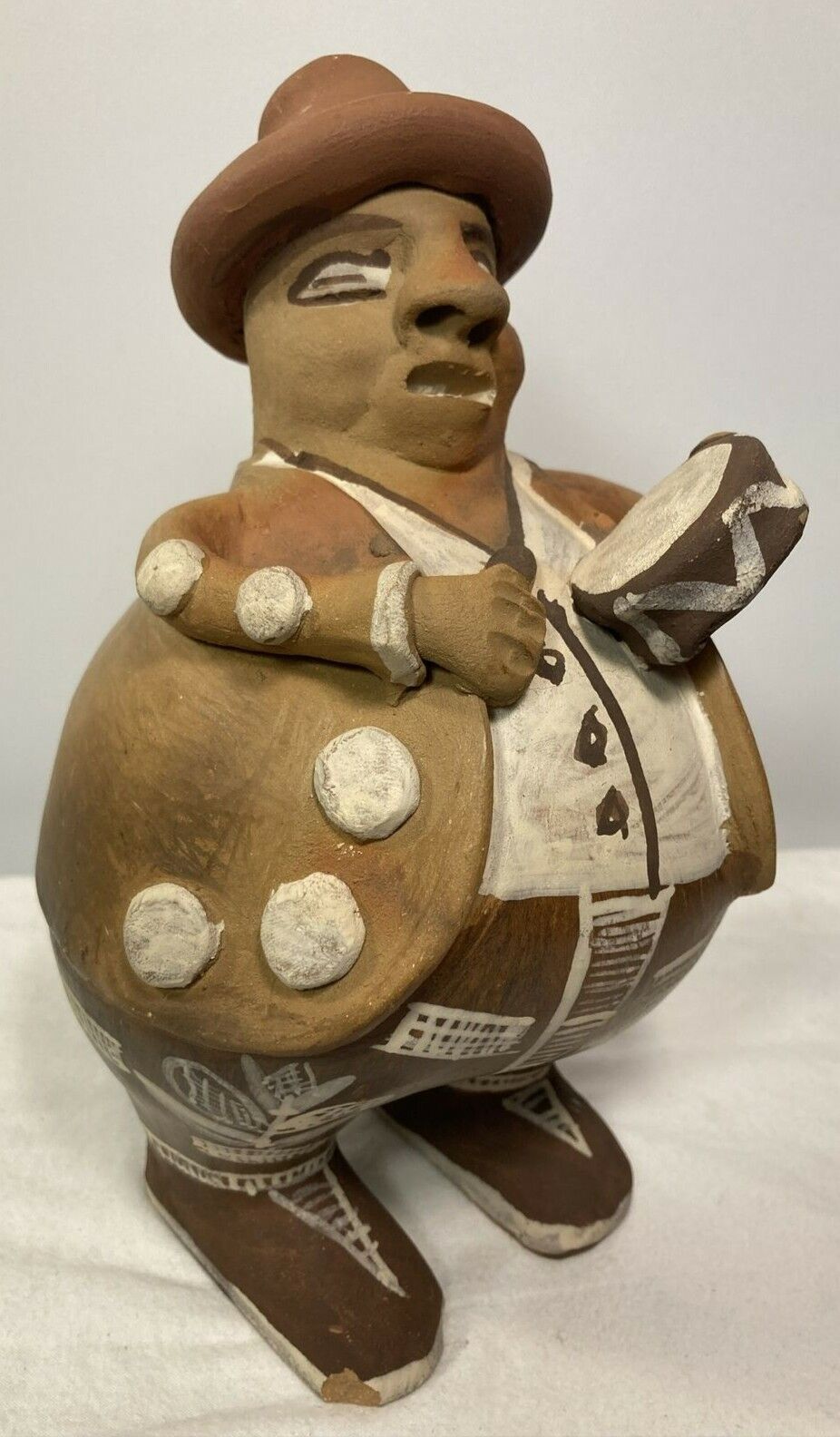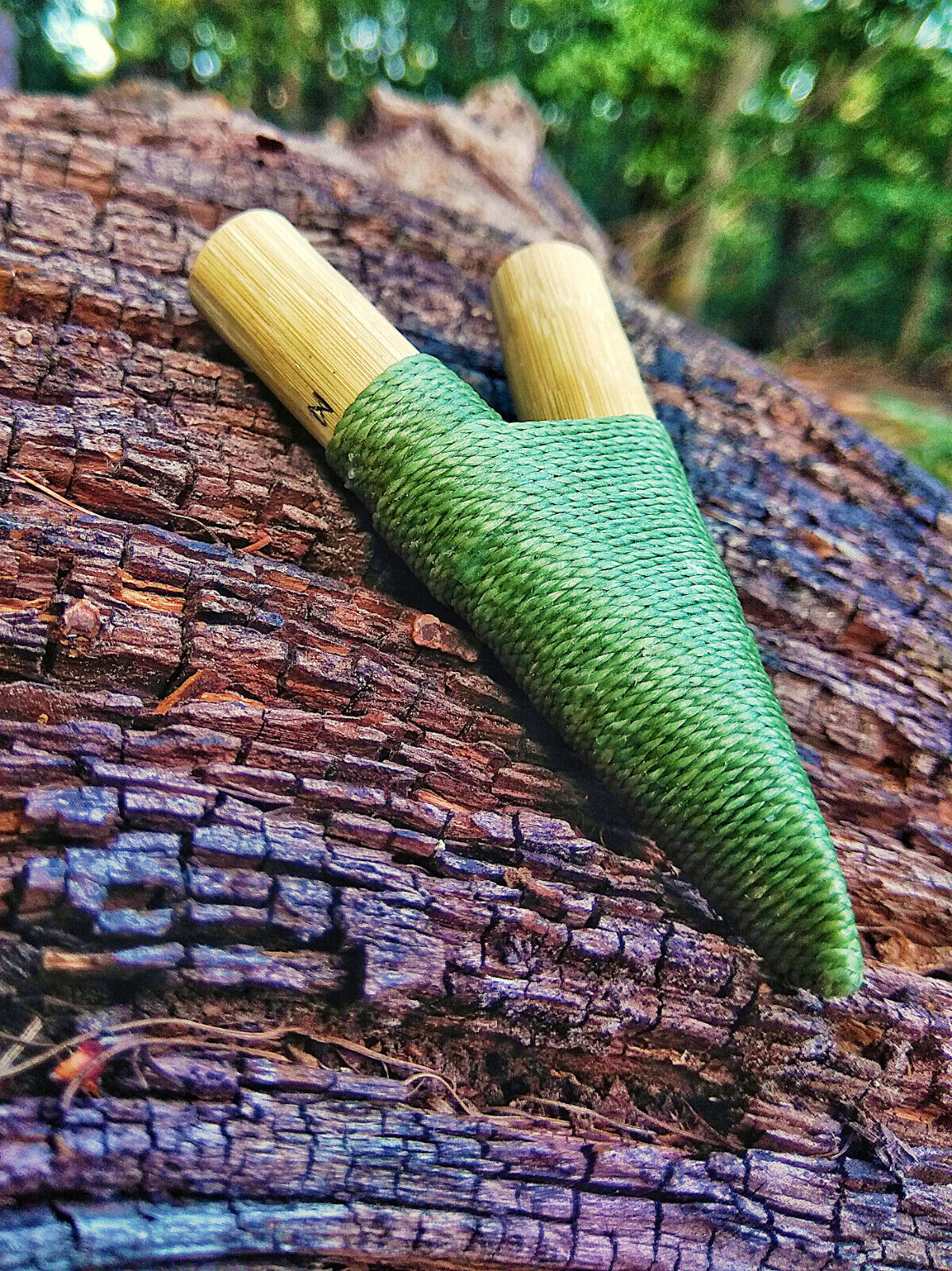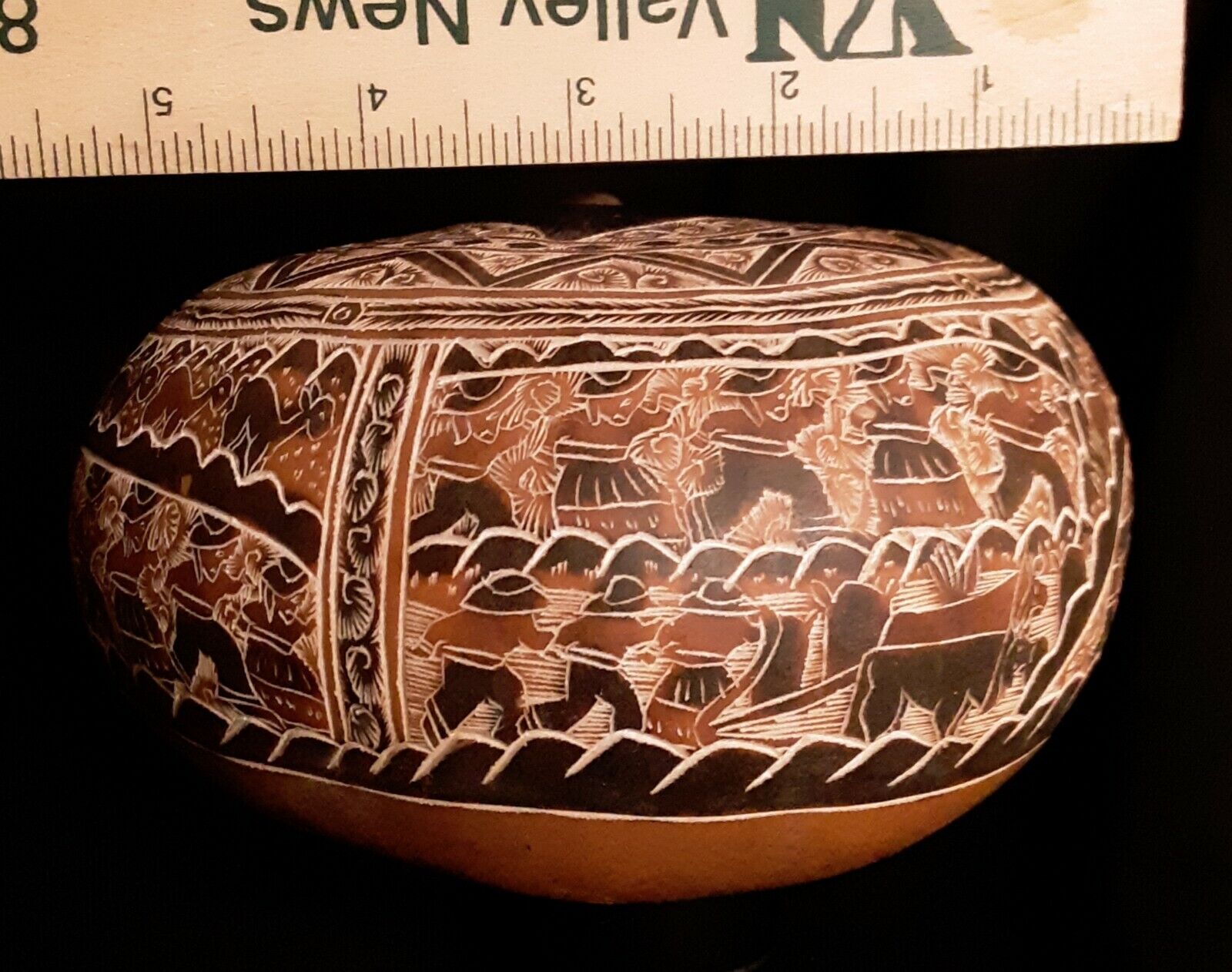-40%
Antique Shipibo Polychrome Face Healing Bowl (Olla) Amazon Rainforests of Peru
$ 294.62
- Description
- Size Guide
Description
ANCIENT CIVILIZATIONSArtifacts, Antiques & Fine Collectibles
Polychrome Face Bowl (
Olla
) from Peru
Shipibo Indians of Peruvian Amazon Rainforest:
Used to Prepare a Hallucinogenic
Healing Drug called “
Ayahuasca
” in Peru
c. 1920s—1930s
Item:
Shipibo Pottery Bowl (
Olla
)
Country: Peru
Approximate Measurements:
·
Height:
7.0
” (180 mm)
·
Center Diameter:
5.9 (150 mm)
·
Outer Rim Diameter:
3.68” (93 mm)
·
Weight:
23.4
oz. (664 gr.)
SUMMARY
An impressive early 20
th
century bowl (
olla
) attributed to the Shipibo culture that lives in the Amazon rainforest of north-eastern Peru. This bowl likely dates to about the 1920s or 1930s. It has a delicate, thin walled construction and is nicely painted in the simple, early style, which is the traditional black and orange linear designs on a cream-colored background that some say represents the mountains.
This small pot was likely used by the Shipibo in the Amazon jungles to prepare a hallucinogenic, healing drug called “Ayahuasca” that
contains DMT and
has been utilized by the Shipibo for millennia.
The Shipibo are masters of
Ayahuasca
, a medicinal tea made mixing
ayahuasca
vine and
chacruna
leaves.
This bowl is an exceptional, early piece and almost impossible to find in such fine, used condition.
CONDITION & DETAILS
The exterior is beautifully painted with traditional Shipibo designs in black and orange against a creamy white background. The interior shows a bit more wear and signs of old use for preparing the hallucinogenic, healing drug called “
Ayahuasca
.”
The exterior has some light staining from old use as a healing pot and has only minor loss of the tree sap/resin glaze that is consistent with age, and a few very minor chips on the rim and dings.
Remarkably, it has never been broken and shows no signs of repair of restoration.
It probably dates to the 1920s and was collected in Peru in the 1930s.
Shipibo pottery is fashioned by the natives in the Amazon rain forests of Northern Peru, South America.
The Shipibo People, as well as the Conibo, who live in the jungles of Peru along the Ucayali River—a major tributary of the Amazon River—have lived there since around 800 AD.
The Shipibo women mix the clay with the ash from a specific tree (
Apacharama
), and then the pots are hand coiled and built up similar to Pueblo pottery; no potter's wheel is used.
The pots are fired in an outdoor firing.
The distinct, glossy appearance of their pottery, which is achieved not by a fired glaze, but rather by rubbing a block of hard, tree sap from the
lacre
tree while the pot is still hot from the kiln so that the resin fuses with the clay surface.
The painted designs feature intricate geometric designs that many say are inspired by the visions seen while ingesting a brew used by the natives as a ceremonial sacrament.
One recent traveler to the Shipibo people in the Amazon reported that the main potter of the village said his grandfather was told that the white pigments represented mountains. When the Incas came to the rain forests centuries ago, they asked the Shipibo to teach them about pottery.
Eventually, the black lines came to represent the rivers and Incan roads.
The patterned pots form a distinctive cultural feature from the other Indian tribes in the lowlands of northeastern Peru.
The geometric, polychrome designs come from the visions of those who use a hallucinogenic, healing drug called “
Ayahuasca
” (pronounced “I-o-es-ka”) made from tea leaves found in the Amazon.
The leaves contain the power hallucinogenic DMT.
The Shipibo are masters of Ayahuasca, a medicinal tea made mixing
ayahuasca
vine and
chacruna
leaves. Healers (
Onanya
) from the Shipibo tribe would make this drug and administer it to those who wished to heal. When taken orally,
Ayahuasca
has been repeatedly proven to exhibit spiritual properties that radically alter consciousness, thus causing "hallucinations" such as alterations in one’s perceptions of reality.
The geometric designs that are painted onto their pottery are those of healing and sacred icaros; each pot is individual and unique.
The Shipibo paint their faces with the same geometric patterns—see photo # 10 which is not part of this sale.
The sophisticated designs and geometric patterns of the ceramics are passed from one generation of artists to another for thousands of years. The pieces are extremely thin and light weight, and their technique is all done manually without the use of pottery wheels.
There are many other theories about the meaning of the unique intricate Shipibo geometric patterns. Some anthropologists consider it an ancient language form; others hypothesize that the patterns represent a mapping of the rivers of the Amazon. Some even believe the patterns represent the shapes of the Anaconda. While anthropologists may not be able to agree on the meaning, art lovers can appreciate the beautiful designs, the soft curves and the pristine yet original look of the Shipibo designs.
This olla-form vessel was made by hand in the Amazon rain forest and decorated in the period-correct, older geometric designs that are executed in black and orange on a cream ground with a solid orange, conical base.
The beautiful, high gloss exterior is achieved by lacquering the piece with a tree resin found only in the Peruvian Amazon jungle.
This pre-Columbian artifact is remarkably well preserved, there are nonetheless soil abrasion scratches, rim dings and other imperfections gleaned through time. Nice patina evident on the artifact.
The varying geometric patterns have remained clear and colorful throughout the centuries. A fascinating piece of the Peruvian past.
The Shipibo Tribe Today
The Shipibo tribe consists of around 35,000 people living in over 300 villages in the Pucallpa region.
Their communities are mostly situated along the RĂo Ucayali and nearby oxbow lakes.
The
RĂo Ucayali
joins the
RĂo Marañon
to form the mighty
RĂo Amazonas
, the longest and largest river in the world.
The
RĂo Amazonas
flows northward past Iquitos on its long journey to the Atlantic Ocean.
Shipibo people never paint their full bodies, but only their faces, necks, and the tops of their hands and feet.
The intricate rectilinear and curvilinear designs that cover the faces, clothing, houses, ceramics and other objects of the cultures on the Ucayali River of the upper Amazon in Peru derive from the origin of the world, when everything in the universe was covered with such lines in a continuous unified design. The original patterns were lost, or obscured, due to misdeeds of failed proto-humans, but they are still present everywhere if one can see them. Male shamans can reclaim the patterns through hallucinogenic visions and relay them to artists who bring them back into the world through the decorations they create on objects. The women artists are aided in realizing the intricate patterns by placing the colorfully veined leaf of the iponquene plant over their eyelids before they start — the plant is named after a complexly patterned armor-headed catfish. These harmonious designs are associated with human cultivation and prosperity. In rituals, shamans can sing the tunes of songs from this labyrinth of lines.
By Christopher Agostino
Note:
Each object I sell is professionally researched and compared with similar objects in the collections of the finest museums in the world.
I have been dealing in fine antiquities for almost 50 years and although certainly not an expert in every field, I have been honored to appraise, buy, collect, and enjoy and recently sell some of the finest ancient art in the world.
When in doubt, I have worked with dozens of subject matter experts and appraisers to determine the condition and authenticity of numerous antiquities and antiques.
This documentation helps to insure you are buying quality items and helps to protect your investment.
Please look at the 4x macro photos carefully as they are part of the description.
Member of the Archaeological Institute of America (AIA) and the Authentic Artifact Collectors Association (AACA).
Per e-Bay's rules,
PayPal
only please!
Thank You!
USA SHIPPING include
s insur
ance and
is accurate for all 50 States!
